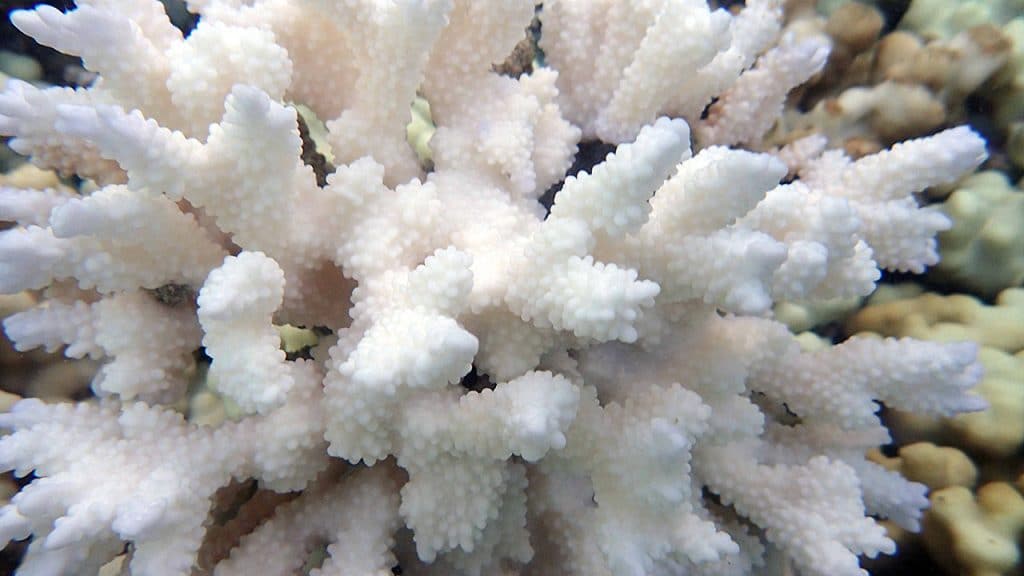This coral’s stark white color indicates that it is stressed, probably by warming water. Most corals host a type of algae that produce food for the live coral polyps and that also give reefs their vibrant color. As water temperature rises, corals often eject their algae, making the underlying white skeleton visible, and putting them at risk of starvation and death. This process is called coral bleaching, and it is increasingly common as global warming affects ocean temperatures worldwide. But it can also be mitigated by things such as ocean currents and the resilience of some coral species themselves. (Photo by Amy Apprill, Woods Hole Oceanographic Institution)
Image and Visual Licensing
WHOI copyright digital assets (stills and video) on this website can be licensed for non-commercial use upon request and approval. Please submit your request via our Media Request Form.
For assistance or accessibility accommodations, call (508) 289-2647.
